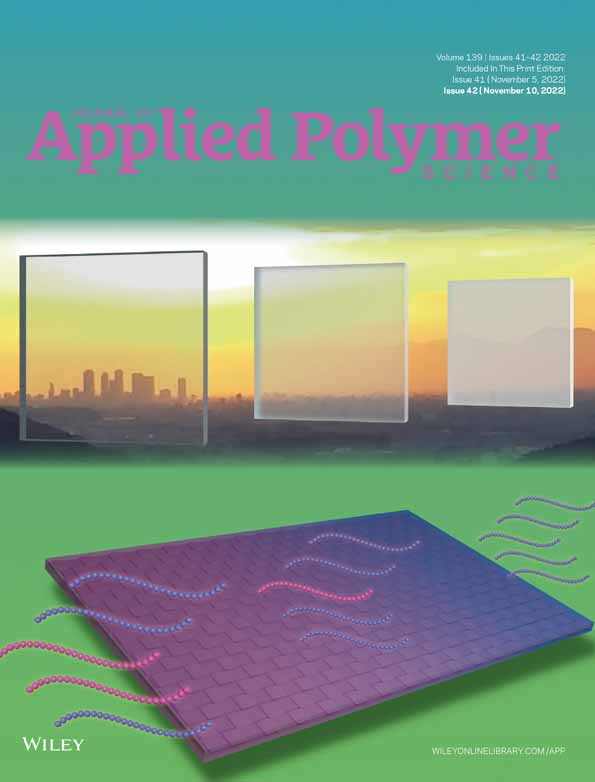Flexible polymeric biomaterials from epoxidized soybean oil, epoxidized oleic acid, and citric acid as both a hardener and acid catalyst
Funding information: Natural Sciences and Engineering Research Council of Canada, Grant/Award Number: RGPIN-2018-04636; Ontario Ministry of Agriculture, Food and Rural Affairs, Grant/Award Number: UG-T1-2020-100152
Abstract
Flexible bio-based polymeric materials were produced by combining epoxidized soybean oil (ESO), aqueous citric acid solutions, and varying amounts of epoxidized oleic acid (EOA), followed by heating at 95°C for 24 h. Starting materials were analyzed by way of proton nuclear magnetic resonance (H1 NMR), to confirm the conversion of double bonds in soybean oil or oleic acid to epoxides. Attenuated total reflectance Fourier-transform infrared spectroscopy (ATR-FTIR) was used to confirm the reaction of epoxide groups with citric acid and/or EOA. Tensile testing was done to determine the differences in Young's modulus between samples with varying amounts of EOA. Stiffness increased with decreasing EOA content. The stiffest sample (0% EOA) and most elastic sample (30% EOA) had a Young's modulus of 1.43 ± 0.19 MPa and 0.064 ± 0.004 MPa, respectively. Differential scanning calorimetry (DSC) showed that the glass transition temperature was below room temperature for all samples, and decreased with increasing EOA content.
Open Research
DATA AVAILABILITY STATEMENT
The data that support the findings of this study are available from the corresponding author upon reasonable request.




